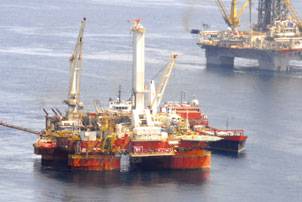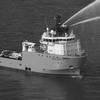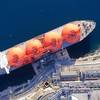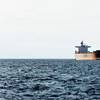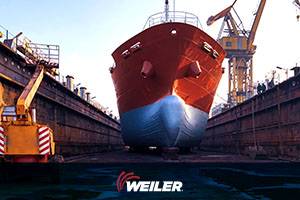Adm. Allen Reports on Static Kill Ops
On August 3, National Incident Commander Admiral Thad Allen provided a briefing to inform the American public and answer questions on the administration-wide response to the BP oil spill. Admiral Allen reported on preparations for the static diagnostics test, or “static kill,” which BP has since conducted. While the static diagnostics test will provide more information about well integrity and improves the probability of success for the relief well, Allen stressed the importance of the relief well to ultimately kill the well. Once results from the static diagnostics test are received, the relief well is expected to be completed within five to seven days.
“The static kill will increase the probability that the relief well will work. But the whole thing will not be done until the relief well is completed. The static kill is not the end all be all. It is a diagnostic test that will tell us a lot about the integrity of the casing and the wellbore. It will tell us about the tolerance for volume and pressure. But in the long run, drilling into the annulus and into the casing pipe from below, filling that with mud and then filling that with cement is the only solution to the end of this,” he said.
“And there should be no ambiguity about that. I'm the National Incident Commander, and that's the way this will end…with the relief wells being drilled, and the annulus and the casing being filled with mud, and cement being poured.”
Seismic and Acoustic Testing Continue to Ensure the Integrity of the Wellhead
In order to ensure the integrity of the wellhead and search for and respond to anomalies, the research vessel Geco Topaz and NOAA Ship Henry R. Bigelow are conducting seismic and acoustic tests around the wellhead—part of continued efforts to use the best scientific tools available in response to the BP oil spill. The pressure in the wellhead continues to rise, demonstrating that it has integrity, and is currently at 6,994 pounds per square inch.
Secretary Salazar Joins Secretary Chu in Houston to Inspect “Static Kill” Procedure:
In his eleventh trip to the Gulf Coast since the oil spill began, Interior Secretary Ken Salazar traveled to the BP Command Center in Houston, Texas to meet with BP officials, scientists and engineers and members of the federal science team, led by Energy Secretary Steven Chu, to receive an update on the progress of the “static kill” operation. This is Secretary Chu’s seventh trip to the Gulf Coast.
Secretary Mabus Holds Two Town Hall Meetings in Florida:
Continuing his fourth trip to the Gulf Coast, Navy Secretary Ray Mabus hosted two town hall meetings—in Panama City and St. Petersburg, Florida—part of a weeklong series of meetings held throughout the Gulf Coast. The town hall meetings are open to the public and media, and will provide residents an opportunity to discuss long-term economic and environmental restoration ideas with the Secretary. Yesterday, Mabus hosted two meetings in Alabama.
President Obama charged Secretary Mabus with developing a long-term Gulf Coast Restoration Plan: The plan will consider economic development, community planning, restoration of the ecosystem and environment, public health efforts and assistance to individuals and businesses impacted by the spill in the Gulf.
Approved SBA Economic Injury Assistance Loans Surpass $18.6 Million:
SBA has approved 216 economic injury assistance loans to date, totaling more than $18.6 million for small businesses in the Gulf Coast impacted by the BP oil spill. Additionally, the agency has granted deferments on 770 existing SBA disaster loans in the region, totaling more than $4.2 million per month in payments. For information on assistance loans for affected businesses, visit the SBA’s Web site at www.sba.gov/services/disasterassistance, call (800) 659-2955 (800-877-8339 for the hearing impaired), or email [email protected].
Administration Continues to Oversee BP’s Claims Process:
The administration will continue to hold the responsible parties accountable for repairing the damage, and repaying Americans who’ve suffered a financial loss as a result of the BP oil spill. To date, 140,465 claims have been opened, from which more than $277 million have been disbursed. No claims have been denied to date. There are 1,262 claims adjusters on the ground. To file a claim, visit www.bp.com/claims or call BP’s helpline at 1-800-440-0858. Those who have already pursued the BP claims process and are not satisfied with BP’s resolution can call the Coast Guard at (800) 280-7118. Additional information about the BP claims process and all available avenues of assistance can be found at www.disasterassistance.gov.



